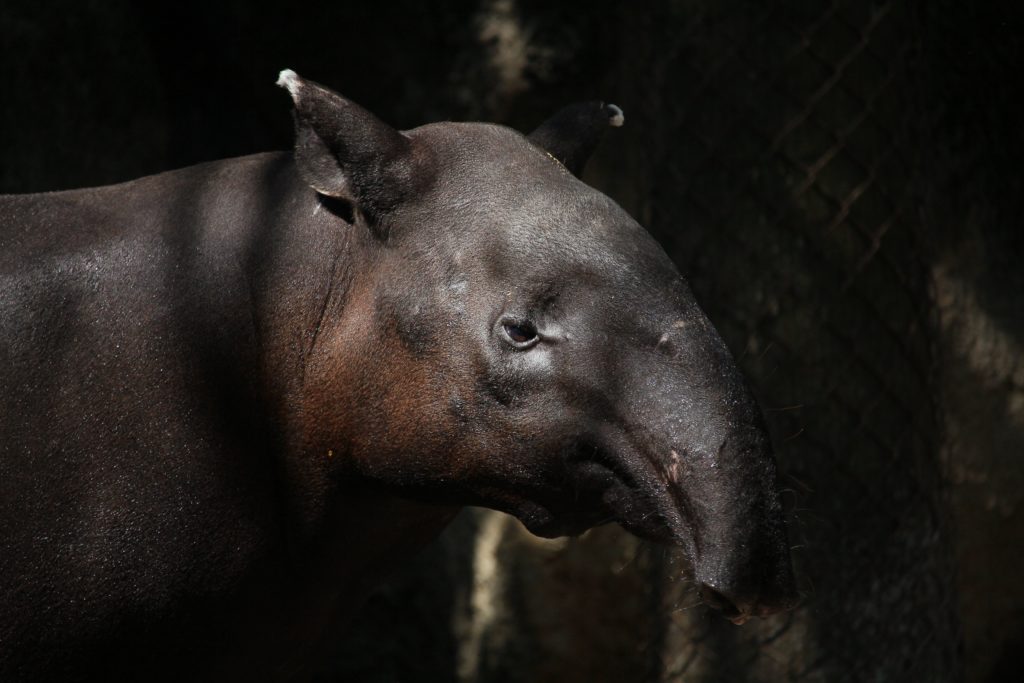The tapir: local identity

Also known as “Danta,” the Tapir (or Tapirus bairdii) is the largest terrestrial mammal in the Neotropics: averaging around 2 meters in length, 1 meter in height, and weighing approximately 300 kg, its long trunk-like nose gives it a friendly appearance.
Being able to observe this survivor from prehistoric times is a unique opportunity. Indeed, this animal is now endangered after centuries of human-driven hunting for food, habitat loss, and vehicle collisions. There are around 5,000 individuals worldwide, with approximately 1,000 in Costa Rica. Here, tapirs inhabit both lowland areas (such as in the Corcovado region or Guanacaste) and higher altitudes, like in the Cerro de la Muerte.
The tapir is popularly known as the “gardener of the forests,” partly because it has a habit of dispersing seeds and clearing the ground. The danta is herbivorous and feeds on undergrowth, a major obstacle for germination; as a result, it plays a crucial role in this ecosystem. Its presence facilitates the growth of seedlings in these wooded areas.
In the Bribri indigenous language, the Danta is called “Nai,” and it holds an important place in the Bribri cosmovision. The danta is depicted as the sister of the god Sibö, symbolizing wisdom, life, survival, and identity.
Nai Conservation, the foundation created by biologist Estaban Brenes, brings together young professionals from various backgrounds. They work on several research and education projects to protect tapir populations in Costa Rica and conserve their habitat. Don’t hesitate to support their efforts!

